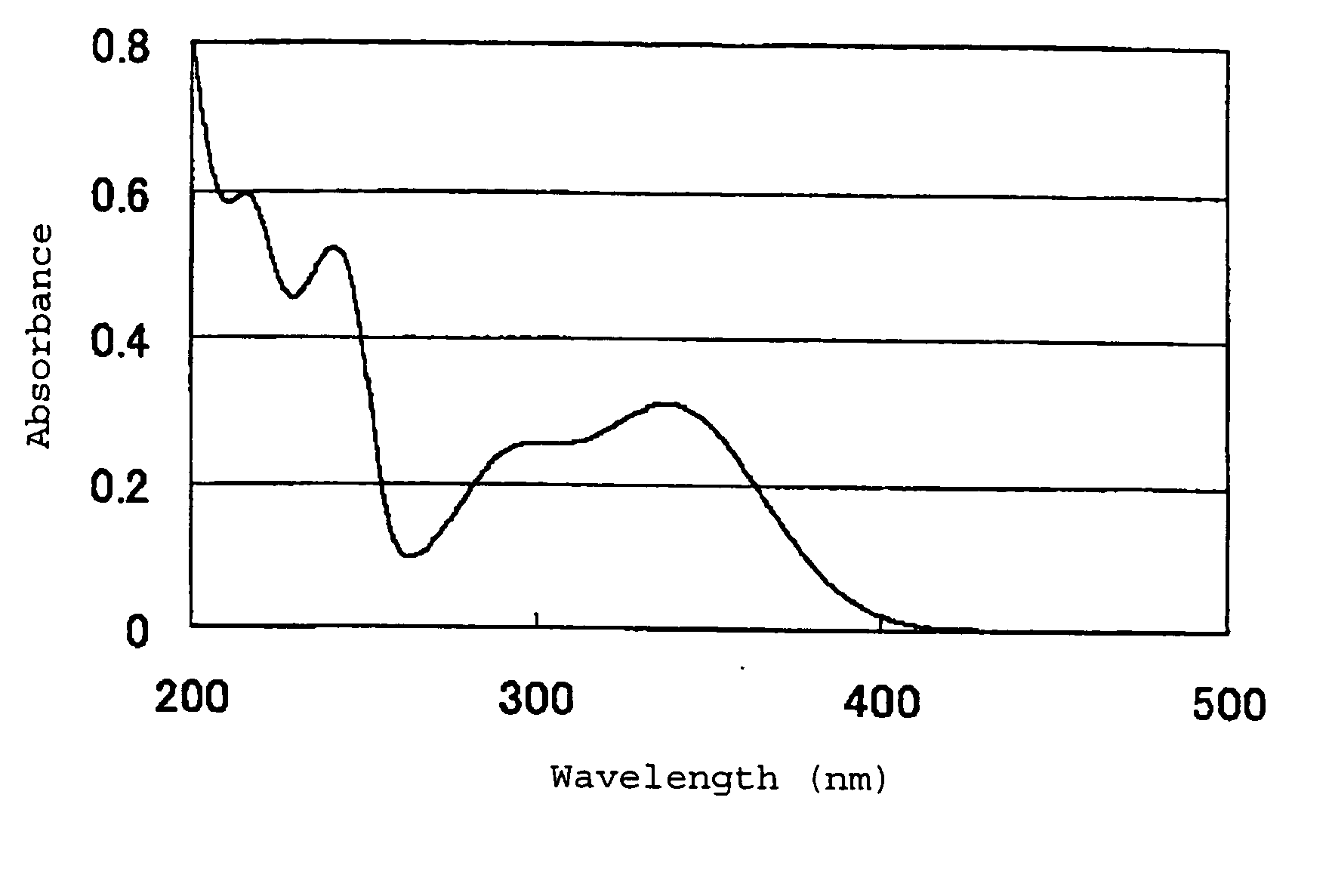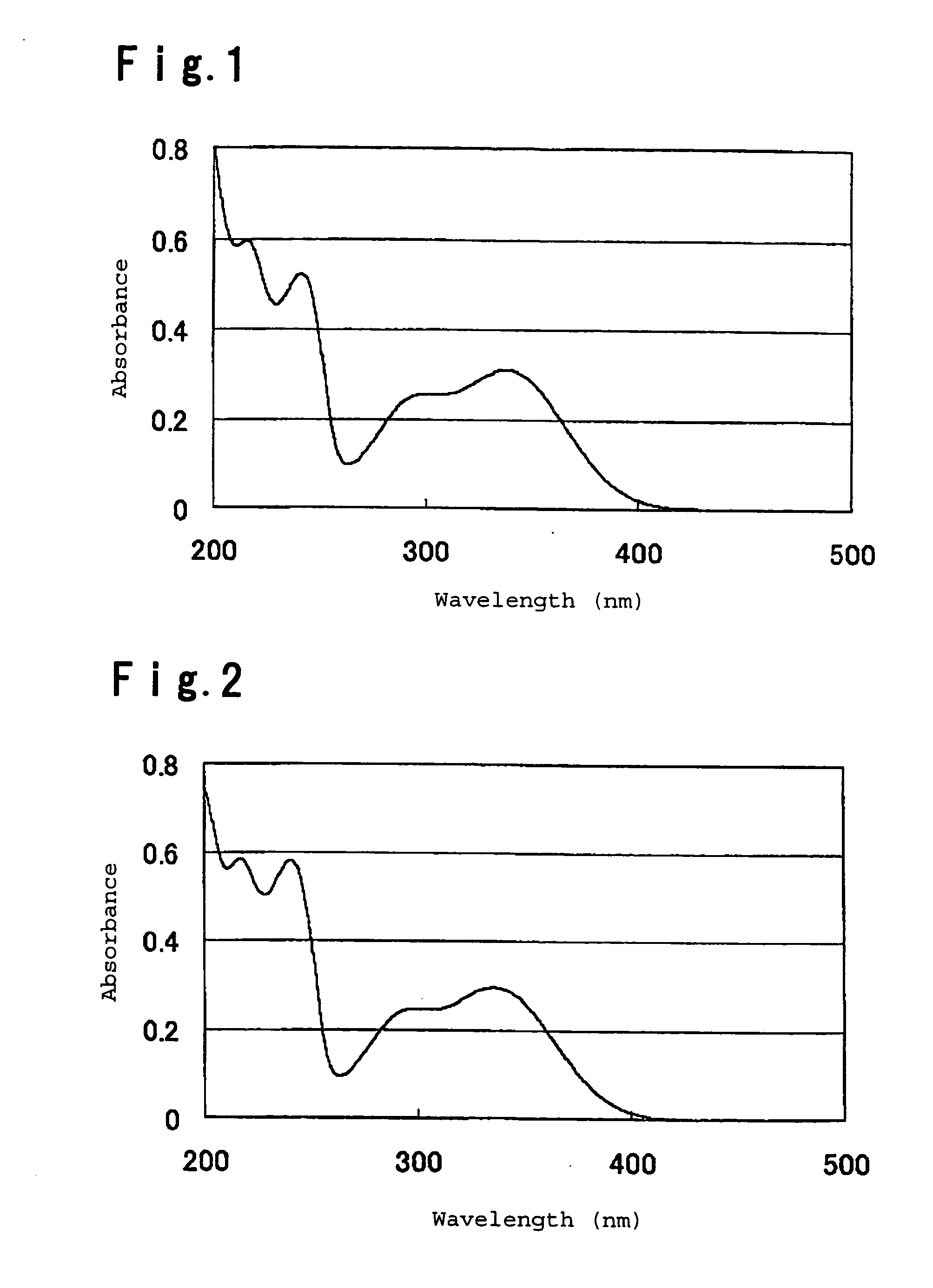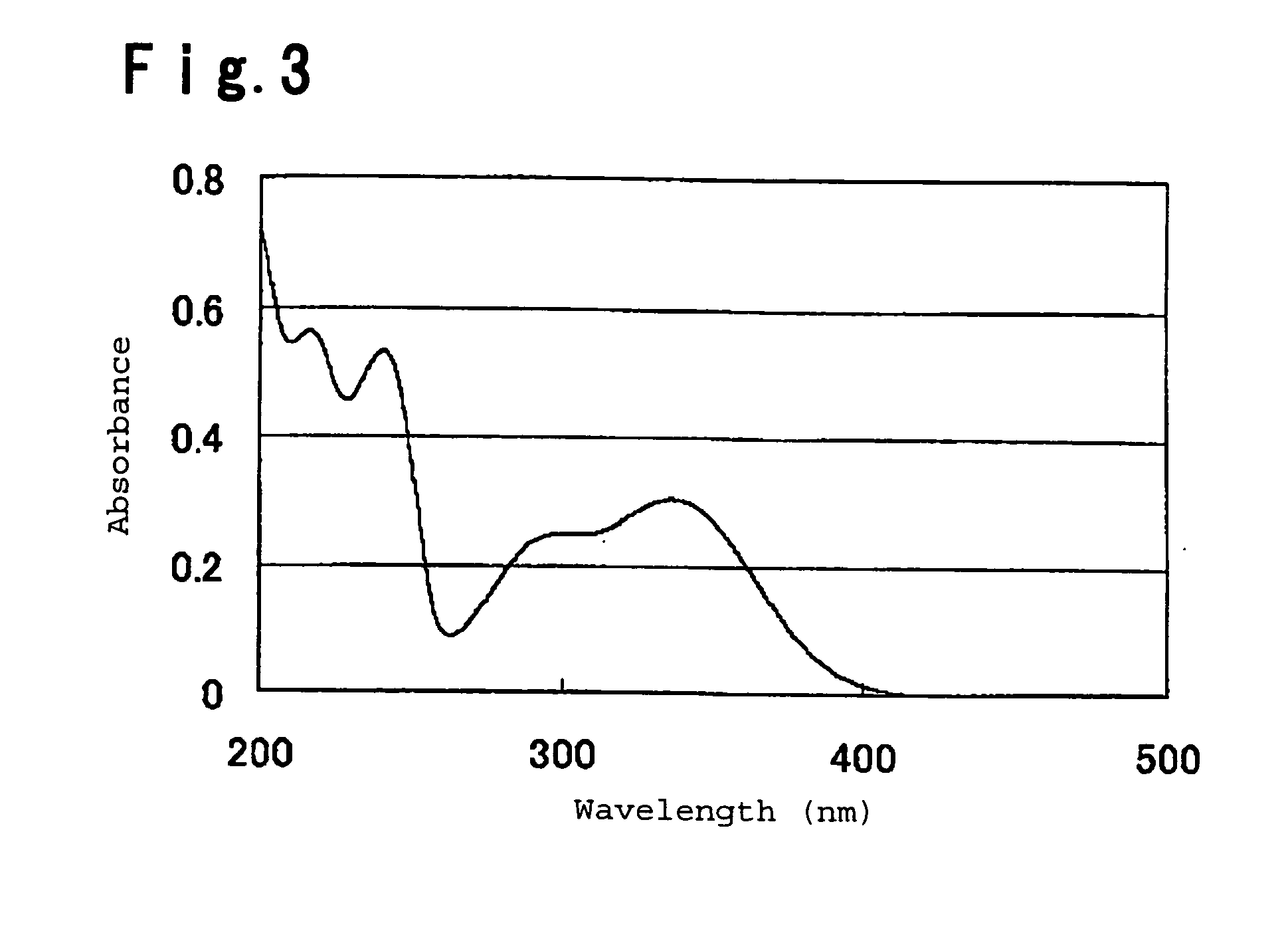Fluorinated compound, water repellent composition and thin film
a technology of fluorinated compound and composition, applied in the field of ultraviolet light-degradable fluorinated compound, can solve the problems of low energy utilization efficiency, low material utilization efficiency, and decomposition of the si—o bond of the substrate, and achieve the effects of low energy consumption, excellent water repellency, and easy decomposition
- Summary
- Abstract
- Description
- Claims
- Application Information
AI Technical Summary
Benefits of technology
Problems solved by technology
Method used
Image
Examples
preparation example 1
Preparation Example 1-1
[0058] Into a 500 mL reactor made of glass, equipped with a thermometer, a stirrer and a Dimroth condenser, 91 g of C8F17CH2CH2CH2Br (the purity according to gas chromatography (hereinafter referred to as GC) was 84.3 mol%), 22.7 g of vanillin, 39.0 g of potassium carbonate, 6.87 g of tetrabutylammonium bromide and 170 g of acetonitrile were charged, heated to 82° C. and refluxed for 1.5 hours to conduct the reaction to obtain a reaction crude liquid. Then, to the obtained reaction crude liquid, 450 g of R-225 was added, and the mixture was washed twice with 300 g of distilled water. Then, R-225 as the solvent was distilled off to obtain 109 g of the following compound a. The GC purity was 79.5 mol %, and the yield was 99.5%. The results of 19F-NMR and 1H-NMR are as shown below.
[0059]19F-NMR (solvent: CDCl3) δ (ppm): −81.3 (3F), −114.7 (2F), −122.4 (6F), −123.2 (2F), −123.9 (2F), −126.6 (2F).
[0060]3H-NMR (solvent: CDCl3) δ (ppm): 2.13-2.42 (4H) , 3.90 (3H)...
preparation example 1-2
[0061] Into a 1L reactor made of glass, equipped with a thermometer, a dropping funnel, a stirrer and a Dimroth condenser, 109 g of the compound a obtained in Preparation Example 1-1 and 330 g of acetic acid were charged, and a solution prepared by mixing 128 g of fuming nitric acid and 105 g of acetic acid was dropwise added thereto over a period of 30 minutes at room temperature. Thereafter, the reaction was further conducted for 3 hours to obtain a reaction crude liquid. Into the obtained reaction crude liquid, 300 g of R-225 was added, and then the mixture was washed with 500 g of distilled water, 500 g of a 8 mass % sodium bicarbonate aqueous solution and 500 g of distilled water. Then, R-225 as the solvent was distilled off to obtain 111.8 g of the following compound b. The GC purity was 73.6 mol %, and the yield was 82.7%. The results of 19F-NMR and 1H-NMR are as shown below.
[0062]19F-NMR (solvent: CDCl3) δ (ppm): −81.2 (3F) , −114.7 (2F), −122.4 (6F), −123.2 (2F), −123.8 (...
preparation example 1-3
[0064] Into a 300 mL reactor made of glass, equipped with a thermometer, a stirrer and a Dimroth condenser, 26.8 g of the compound b obtained in Preparation Example 1-2, 3.3 g of hydrazine monohydrate and 150 g of ethanol were charged, heated to 78° C. and refluxed for 3 hours to conduct the reaction. Thereafter, the mixture was cooled to room temperature, and a crude product thereby precipitated was recovered by filtration and washed 5 times with 50 g of ethanol. It was dried under reduced pressure to obtain 17.1 g of the following compound c. The NMR purity was 100 mol %, and the yield was 85.1%. The results of 1H-NMR are as shown below.
[0065]1H-NMR (solvent: CDCl3) δ (ppm): 2.12-2.39 (4H) , 3.95 (3H), 4.13 (2H), 5.81 (2H), 7.48 (1H), 7.55 (1H), 8.41 (1H).
PUM
 Login to View More
Login to View More Abstract
Description
Claims
Application Information
 Login to View More
Login to View More - R&D
- Intellectual Property
- Life Sciences
- Materials
- Tech Scout
- Unparalleled Data Quality
- Higher Quality Content
- 60% Fewer Hallucinations
Browse by: Latest US Patents, China's latest patents, Technical Efficacy Thesaurus, Application Domain, Technology Topic, Popular Technical Reports.
© 2025 PatSnap. All rights reserved.Legal|Privacy policy|Modern Slavery Act Transparency Statement|Sitemap|About US| Contact US: help@patsnap.com



